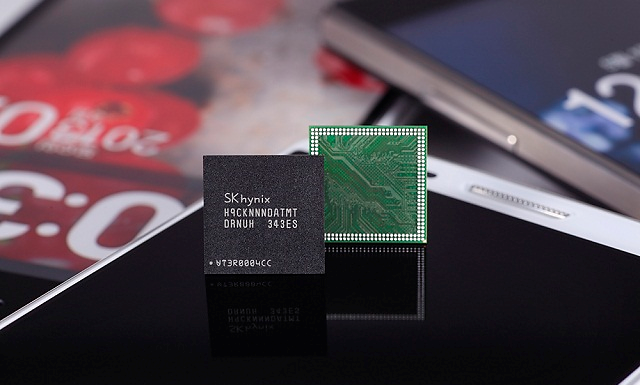South Korean chip giant SK hynix will start mass production of lower 20-nanometer class dynamic random access memory in the second half of this year, its chief said Friday, as it shores up efforts to keep its grip on the memory chip business through the advanced technology.
 “It’s possible from the early second half,” Park Sung-wook, the chief executive officer of SK hynix said after the shareholders meeting earlier in the day, in response to a question raised by a reporter about the timing of the mass production.
“It’s possible from the early second half,” Park Sung-wook, the chief executive officer of SK hynix said after the shareholders meeting earlier in the day, in response to a question raised by a reporter about the timing of the mass production.
The development of the advanced 20-nanometer technology, a finer microprocessing of memory chips, has been a major task for global chipmakers competing to get ahead because it lowers production costs.
The lower the nanometer figure, the higher the productivity for chipmakers. The 20-nanometer processing technology can get 30 percent more productivity from 300mm-wafers than the preceding 25-nanometer-based production, and 50 percent more than the 29-nanometer technology.
Samsung Electronics Co., a bigger rival of SK hynix, has been taking the lead with making nanometer class DRAMs, starting as the industry’s first to mass-produce them for PCs early last year and expanding to mobile DRAMs and server DRAMs.
SK hynix’s nanometer technology is said by analysts to largely consist of mid-20 nanometer class chips, lagging behind Samsung, whose level is known to be close to the lower 20-nanometer class range.
“We’ll spare no efforts to achieve our vision of becoming the world’s best memory chip solution company,” Park added.
During the shareholders meeting, SK hynix pledged to complete the construction of its new production line in Icheon, far east of Seoul, by the first half as planned.
SK hynix has spent 2.5 trillion won ($2.2 billion) for the production line. The company is expected to spend about 5.2 trillion won for its 2015 investment, the same amount as last year’s.
SK hynix posted record annual earnings in 2014, breaking the record it set the previous year, with net profit jumping 46 percent to 4.19 trillion won and a 50 percent surge in operating profit at 5.2 trillion won from a year earlier. (Yonhap)

